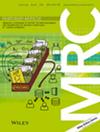A Collaborative Study on Platform 1H Quantitative NMR Method Using Internal Calibration Methodology: Towards Capacity Building for Novices
Abstract
Over the past 20 years, the use of quantitative nuclear magnetic resonance (qNMR) technology has grown significantly in pharmaceutical industry. However, its broader adoption is often limited by specialized expertise required to implement best practices. Recent discussions within the qNMR community in China (qNMR-C) have highlighted the benefits of establishing an applicable qNMR platform method—one that serves as a universal approach, adaptable across multiple products. This approach aims to standardize a single set of qNMR parameters to address the majority of quantitative applications and making qNMR more accessible, particularly for researchers new to the field. The present study outlines the rationale behind the proposed qNMR platform method and demonstrates its strategic framework through a series of designed tests. Key parameters influencing qNMR accuracy and precision, including signal-to-noise ratio, data processing, integration approaches, relaxation delays, T1 relaxation times, and sample weight, were systematically evaluated. A collaborative effort involving 12 NMR instruments across eight laboratories assessed the method's applicability and demonstrated its proper design space. Another objective of this study is to streamline the qNMR workflow, enabling novices to produce reliable, high-quality data early in their learning while ensuring reproducible and meaningful results. Furthermore, this work calls upon the global qNMR community to engage in the continued validation of the proposed platform method, fostering collective knowledge and verifying its robustness across diverse applications.





 求助内容:
求助内容: 应助结果提醒方式:
应助结果提醒方式:


